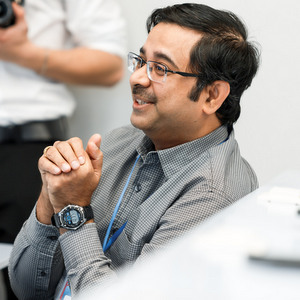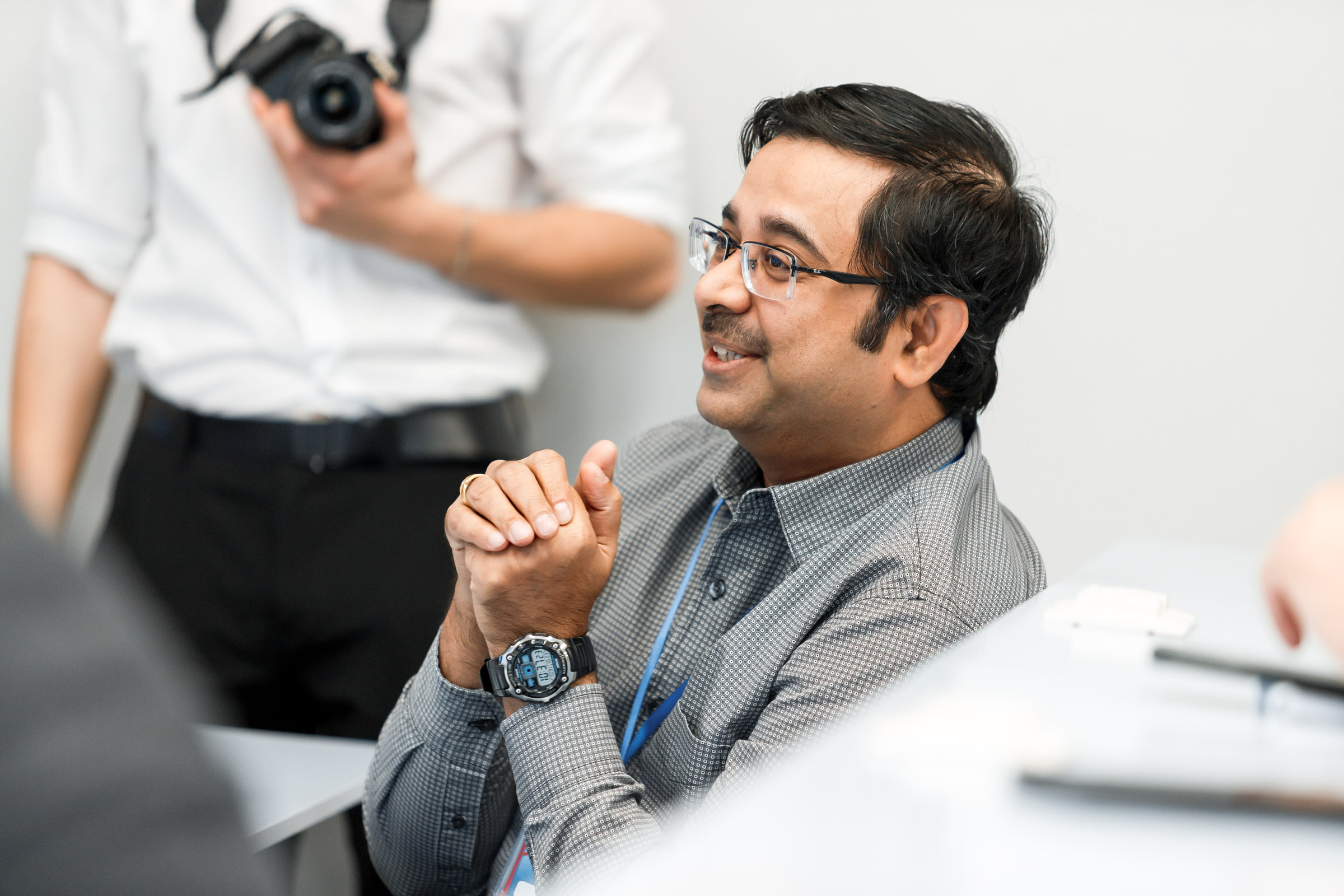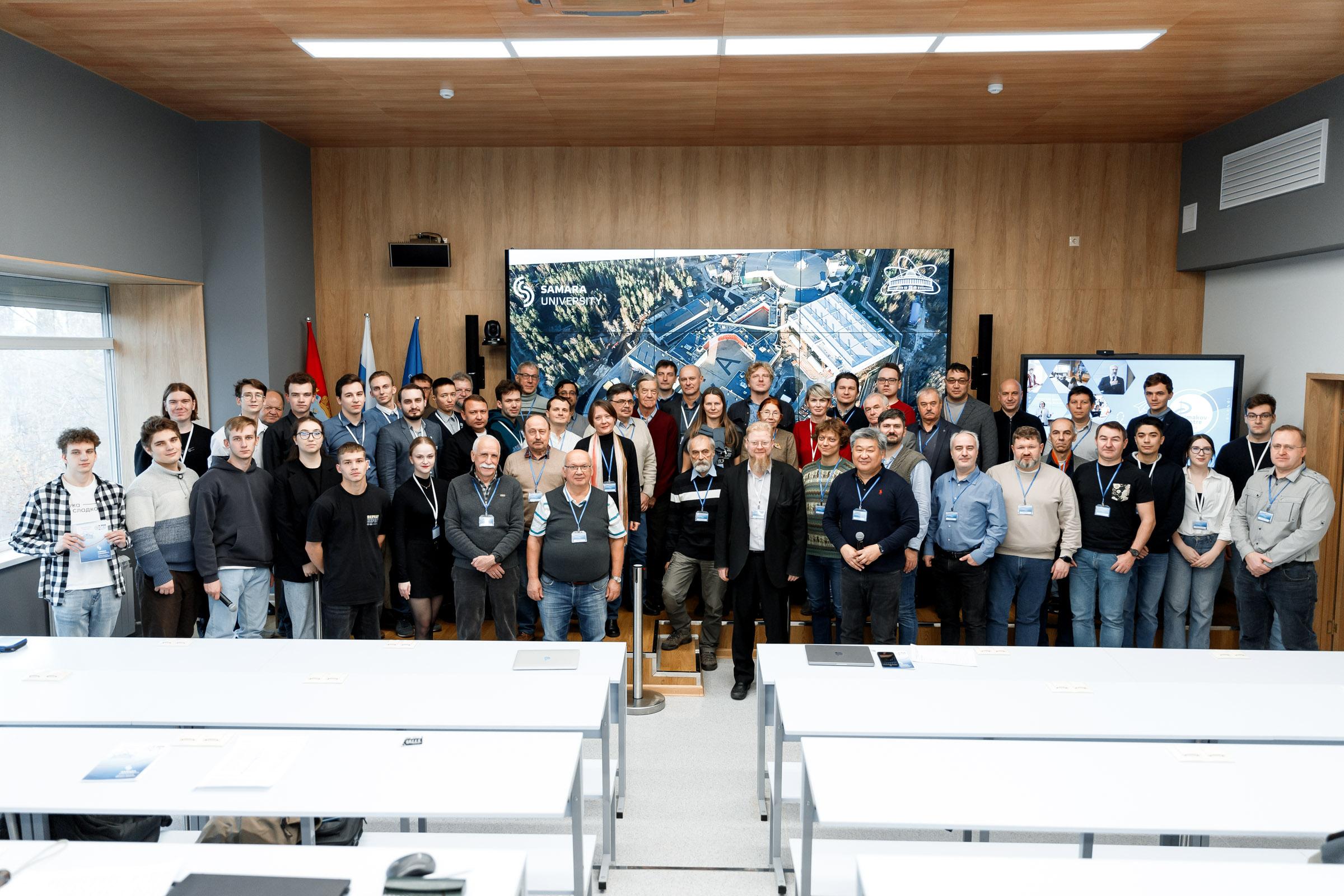158 scientists registered for the 6th International SPD Collaboration Meeting and the Seminar on Information Technologies in Natural Sciences, of which 41 persons came to Samara for face-to-face participation in discussions, 10 persons are employees of Samara University, and the rest participate in the discussion remotely, via videoconference. The Program includes 55 presentations related by subject to the planned experiment at the NICA collider, and 12 presentations — to the Seminar on Information Technologies in Natural Sciences.
“Theoretical physics is at the forefront of understanding the matter properties. Currently, physicists are going to study the spin structure of deuteron and proton. Fundamental properties of strong interaction are now the subject of many researches, which indicates that modern physics develop very quickly”, said Andrey Prokofiev, First Vice-Rector (Vice-Rector for Research) at Samara University, addressing the collaboration participants, when opening the working meeting.
For the first time, this event is held in the visiting format and takes place not in Dubna, in the JINR, but at Samara University, one of the participants of the SPD Collaboration, which currently includes 33 research centers from 14 countries, and over 300 scientists in total. It is symbolic that the discussion has been hosted by the E.M. Primakov Regional Center for Development of Public Diplomacy and International Relations.
The research group of specialists of Samara University, engaged in preparation of the NICA experiment has been headed by Professor Vladimir Saleev, Head of the Department of General and Theoretical Physics of the Faculty of Physics of the Natural Science Institute. At the Meeting, the group presented two thematic reports: “Joint birth of J/Ψ mesons and photons in the SPD NICA” (Lev Alimov) and “On the birth of a ηc particle in SPD NICA” (Anton Anufriev). Vladimir Saleev, Head of the group, presented his report on the work of the Samara Group for 2023.
Aleksey Guskov, Head of the Research and Experimental Department of Counter Beams of Dzhelepov Nuclear Problems Laboratory of the JINR, noted that Samara University organized the meeting well.
“We see that outside the collective of the Joint Institute for Nuclear Research, your University has a group of scientists, who enjoy its support, and are able to take responsibility for organizing this significant event. Both scientific contribution of Samara University to preparation of the experiment and its participation in processing large data arrays that we will receive after the start of the experiment are of great importance for us. In this context, we are interested in your developments in the field of neural networks, and the computing power of your supercomputer “Sergey Korolev”, shared Aleksey Guskov. “We also attach much importance to informal communication between scientists and engineers, which is already taking place “on the sidelines” of our working meeting. The equipment is unique, and success of the experiment largely depends on engineering decisions made”, said the Co-Head of the SPD Collaboration.
The experiment being prepared by nuclear physicists will help resolve the so-called “spin crisis” of the quark model of elementary particles. The SPD (Spin Physics Detector) NICA Collaboration was created in 2019, specifically for researching the spin structure of proton and deuteron — the nucleus of the deuterium atom, one of hydrogen isotopes.
Scientists will try to find out how spin (angular momentum) of these particles is distributed in space. To do this, they are going to collide oncoming polarized beams of protons and deuterons, their collision energy up to 27 GeV, and observe spin phenomena occurring.
The opportunity to work with polarized deuteron beams at such energies is a unique feature of the NICA accelerator complex (Nuclotron based Ion Collider fAcility) being created on the basis of the Joint Institute for Nuclear Research (Dubna), designed to study properties of dense baryonic matter. The scheduled experiment bridges the kinematic gap between researches at low-energy accelerators and those at the European Large Hadron Collider at CERN.
At present, the preparatory work is at the stage of international expertise of the technical design of the experimental installation. Its launch is scheduled for 2028. By this time, all the components of the installation should be designed, manufactured and assembled on the existing ion collider based on the NICA nuclotron. It is also necessary to develop and debug software for processing the data obtained, as well as unite the computing power of the collaboration participants.
“Participation in researching the spin structure of proton and deuteron, as well as other spin phenomena in colliding beams at the NICA ion collider is very important for developing the natural science area at the University. Work in the SPD Collaboration, computer simulation of spin processes bring Samara University to the forefront of elementary particle physics. Participation in this project is included in the Development Strategy of Samara University until 2030”, said Professor Vladimir Saleev. “It is equally important for the university to use its developments in the field of artificial intelligence, and computing power in processing Big Data obtained during the experiment at NICA. Amounts of such data are so large that it takes years to process them. We have the unique opportunity to accelerate receipt of world-class scientific results”.
In the program of the Meeting, the one-day Seminar on IT in Natural Sciences is dedicated to the theme of processing data obtained in nuclear experiments. It will be opened by the lecture “Information technologies for supporting multidisciplinary research”, delivered by Sergey Shmatov, Director of the JINR Information Technology Laboratory. Reports from Samara University will be presented by Nikolay Kazansky, Professor of the Department of Engineering Cybernetics, Artem Nikonorov, Director of the Institute of Artificial Intelligence, Sergey Vostokin, Head of the Department of Software Systems, and Andrey Sukhov, Professor of the Department of Software Systems.
“On the sidelines” of the five-day working meeting, Aleksey Guskov addressed students of Samara University and senior-school pupils with a popular science lecture on particular features of a modern experiment in elementary particle physics.
Aleksey Guskov highlighted the fact that fundamental science manifests itself in three areas: one of them is our worldview, another is expensive technologies to be run-in on research equipment and then transfer to industry, medicine, and one more is skilled personnel. Not everyone is able to rise to the heights of fundamental science, but the medium to be formed around it “feeds” both applied science and high-tech industries with highly skilled specialists.
“Professor Guskov’s public lecture will help arouse students’ and schoolchildren’s interest in physics. And later, some of them are likely to become outstanding scientists”, believes Andrey Prokofiev.
Photo: Olesya Orina
 RU
RU  EN
EN  CN
CN  ES
ES 
.jpg)
.jpg)
.jpg)
.jpg)

.jpg)
.jpg)
